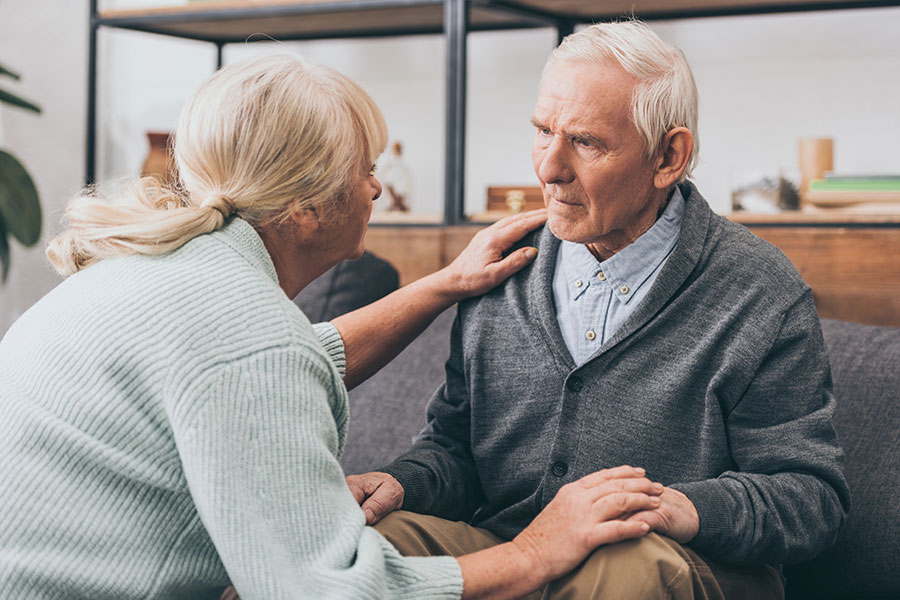
Understanding Dementia and Alzheimer’s: A Practical Guide for Adults at Home
Dementia is not a single disease—it’s a general term for changes that affect memory, thinking, and daily activities. Alzheimer’s disease is the most common type of dementia. While aging can bring slower recall or occasional forgetfulness, dementia is not a normal part of getting older. This guide explains the basics, what to expect, and practical ways to live safely and well at home.
Dementia vs. Alzheimer’s: What’s the difference?
- Dementia describes a group of symptoms—memory loss, confusion, difficulty with problem-solving, changes in language, mood, or judgment—that interfere with everyday life.
- Alzheimer’s disease is one cause of dementia. In Alzheimer’s, abnormal protein changes in the brain gradually damage areas involved in memory and reasoning.
Other conditions (cerebral vascular accidents/strokes, Lewy body dementia, frontotemporal dementia, and mixed types) can look similar. The specific type matters because symptoms and progression can differ.
Common early signs
- Repeating the same questions or stories, poor short-term memory
- Misplacing items and finding them in unusual places
- Losing track of dates, appointments, or bills
- Trouble following recipes or steps you once did easily
- Getting turned around in familiar places
- Word-finding problems or mixing up names for everyday objects
- Personality or mood changes, like withdrawal, apathy, or irritability
If these symptoms are interfering with daily routines, it’s a signal to seek an evaluation so you can make a plan and access helpful resources.
How dementia typically progresses
Progression is gradual and varies by person, but many notice patterns:
- Early (mild): Subtle memory lapses, difficulty multitasking, more effort to manage finances, medications, or transportation. Independence is often possible with good routines and simple tools.
- Middle (moderate): Increased confusion, more assistance needed with bathing, dressing, meals, or scheduling. Safety risks—like wandering, kitchen mishaps, or missed doses—become more likely.
- Late (severe): Extensive support needed with all daily activities. Speech may be limited; mobility and swallowing can be affected.
Knowing the general stages helps you prepare your home and routines ahead of time.
Living safely at home
Small changes make a big difference
- Simplify the environment. Reduce clutter, keep walkways clear, remove loose rugs, and add nightlights to halls and bathrooms.
- Label and organize. Use large-print labels for drawers and doors (“Socks,” “Bathroom”). Keep frequently used items in the same visible place.
- Build a medication system. Use a weekly pill organizer, set alarms, or a lockable dispenser. Track each dose on a simple checklist.
- Prevent kitchen hazards. Consider automatic shut-off devices for stoves, keep sharp tools out of sight, and store rarely used appliances.
- Plan for wandering risk. Place a card with your name and primary contact number in a wallet or on a medical ID. Use door chimes or simple door-knob covers to signal exits opening.
- Fall prevention. Install grab bars, use non-slip mats, and choose supportive, non-skid footwear.
Daily routines that support brain and body
- Consistent schedule. Wake, meals, activity, and bedtime at about the same time each day anchor the rhythm of the day and reduce anxiety.
- Hydration and balanced meals. Aim for water within reach, colorful vegetables, fiber, lean proteins, and healthy fats. Keep snacks simple and visible (like fruit bowls or pre-portioned yogurt).
- Gentle movement. Short walks, stretching, or chair exercises support mood, sleep, and circulation.
- Sleep habits. Daylight exposure in the morning, a calm evening routine, and a cool, dark bedroom help reset your sleep-wake cycle.
- Meaningful activity. Music, puzzles, sorting tasks, folding towels, gardening, or looking through photo albums are engaging and soothing. Keep tasks short and success-oriented.
Communication tips that reduce frustration
- Go slow and keep it simple. Use short sentences and one-step directions. Allow extra time for responses.
- Offer limited choices. “Would you like tea or water?” instead of open-ended questions.
- Use visual cues. Point, demonstrate, or hand the item you’re referring to.
- Validate feelings. Acknowledge worry, sadness, or anger before redirecting. “I can see this is frustrating. Let’s sit for a moment.”
- Avoid arguing about facts. Focus on comfort and safety rather than proving a point.
Handling common behavioral changes
Changes in the brain can show up as agitation, restlessness, or suspiciousness. Consider the “trigger–response” approach:
- Identify a trigger. Is the person hungry, thirsty, too hot/cold, overstimulated, or in pain?
- Adjust the environment. Lower noise, dim harsh lights, offer a snack, or add a calming activity like familiar music.
- Redirect gently. Move to a different room, suggest a simple task, or step outside for fresh air if safe.
Keeping a small notebook of what calms or worsens behavior can help you spot patterns and plan ahead.
Tools that help
- Large-display clocks and calendars to anchor time and date
- Whiteboards for schedules and reminders
- Color-coded bins for clothing or kitchen items
- Wearable ID in case someone becomes lost
- Key finders or tile trackers for frequently misplaced items
- Simple smartphones or photo-dial phones with large buttons and pictured contacts
Choose just one or two tools at a time to avoid overwhelm.
Planning ahead
Even small steps make future decisions easier:
- Write down preferences. Daily routine, food likes/dislikes, activities that bring comfort, and music favorites
- Organize important documents. Identification, insurance, medication lists, and a summary of medical history in one easy-to-grab folder
- Consider future needs. Transportation alternatives, help with housekeeping or meals, and options for more support if safety concerns grow
When to seek more support
Consider arranging additional help at home if you notice frequent falls, rapid weight loss, aspiration risk with swallowing, repeated medication errors, or frequent wandering episodes. Extra hands can improve safety, reduce stress, and support wellbeing.
Bottom line: Dementia and Alzheimer’s change how the brain handles memory, attention, and daily tasks—but with clear routines, safety updates, and simple communication strategies, it’s possible to live more comfortably at home. Start with small, practical steps, keep what works, and adjust as needs change.
The information on this website is for informational purposes only and is not a substitute for professional medical advice, diagnosis, or treatment. Always consult your physician or other qualified healthcare provider with any questions you may have regarding a medical condition.



